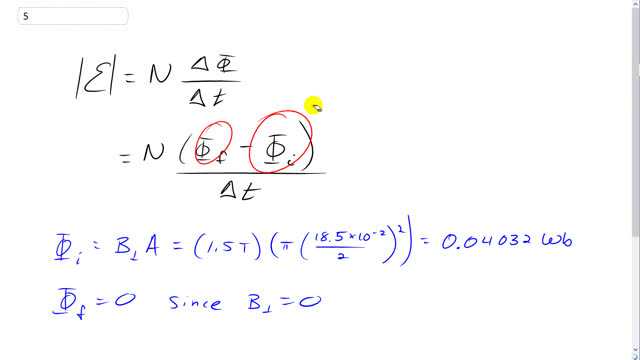
An 18.5-cm-diameter loop of wire is initially oriented perpendicular to a 1.5-T magnetic field. The loop is rotated so that its plane is parallel to the field direction in 0.20 s. What is the average induced emf in the loop?

In order to watch this solution you need to have a subscription.
How come there is not a negative sign in front of the N in this problem?
Hi jhessica, good to notice that. You're quite right that there is typically a negative sign in front of this formula. The purpose of the negative sign is to remind us that the induced EMF is directed in such a way that it produces an induced magnetic flux that opposes the change in magnetic flux that gave rise to the induced EMF. The induced EMF produces an induced magnetic flux that is opposite to the change in magnetic flux, and the negative sign expresses the opposite direction. In this particular question we're asked for the average induced EMF. The direction of it is not important, and I expressed the irrelevance of the direction for this particular question by enclosing the EMF sign between absolute value signs. All we are concerned with in this question is the magnitude of the induced EMF, not its direction.
Hope this helps,
Shaun